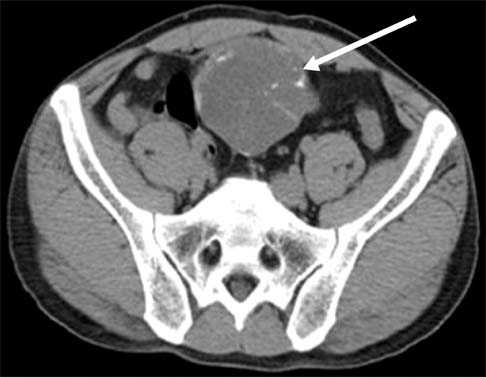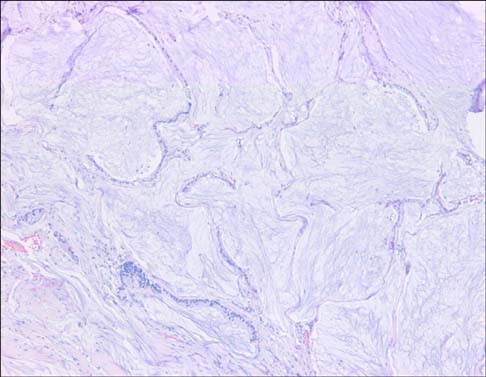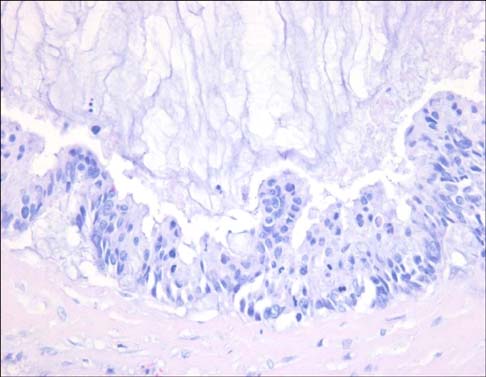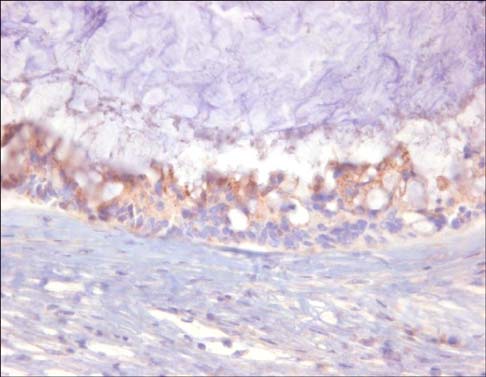Korean J Urol.
2010 Jul;51(7):498-500.
Alpha-Methylacyl-Coenzyme A Racemase-Expressing Urachal Adenocarcinoma of the Abdominal Wall
- Affiliations
-
- 1Department of Urology, Chungbuk National University College of Medicine, Cheongju, Korea. wjkim@chungbuk.ac.kr
- 2Department of Pathology, Chungbuk National University College of Medicine, Cheongju, Korea.
Abstract
- Urachal adenocarcinomas are very rare and about one third of these neoplasms arise in urachal remnants. To demonstrate the origin of the urachal adenocarcinoma is not easy, but it is very important for managing patient care. We report on a 35-year-old man who complained of a palpable mass in the periumbilical area. The mass was incidentally identified 10 days earlier. Computed tomography revealed a well-defined enhancing mass with internal calcification and septation abutting on the dome of the urinary bladder. The clinical diagnosis was urachal cancer, which seemed to invade the urinary bladder. Thus, we performed mass excision and partial resection of the bladder. Histopathologically, the mass was diagnosed as mucinous cystadenocarcinoma originating from urachal remnants that showed an unusual expression of alpha-methylacyl-coenzyme A racemase (AMACR). To our knowledge, this report is the first case of AMACR-expressing urachal adenocarcinoma arising in the abdominal wall.
MeSH Terms
Figure
Reference
-
1. Sheldon CA, Clayman RV, Gonzalez R, Williams RD, Fraley EE. Malignant urachal lesions. J Urol. 1984. 131:1–8.2. Torenbeek R, Lagendijk JH, Van Diest PJ, Bril H, van de Molengraft FJ, Meijer CJ. Value of a panel of antibodies to identify the primary origin of adenocarcinomas presenting as bladder carcinoma. Histopathology. 1998. 32:20–27.3. Suh N, Yang XJ, Tretiakova MS, Humphrey PA, Wang HL. Value of CDX2, villin, and alpha-methylacyl coenzyme A racemase immunostains in the distinction between primary adenocarcinoma of the bladder and secondary colorectal adenocarcinoma. Mod Pathol. 2005. 18:1217–1222.4. Leav I, McNeal JE, Ho SM, Jiang Z. Alpha-methylacyl-CoA racemase (P504S) expression in evolving carcinomas within benign prostatic hyperplasia and in cancers of the transition zone. Hum Pathol. 2003. 34:228–233.5. Xu J, Stolk JA, Zhang X, Silva SJ, Houghton RL, Matsumura M, et al. Identification of differentially expressed genes in human prostate cancer using subtraction and microarray. Cancer Res. 2000. 60:1677–1682.6. Daugherty SE, Platz EA, Shugart YY, Fallin MD, Isaacs WB, Chatterjee N, et al. Variants in the alpha-Methylacyl-CoA racemase gene and the association with advanced distal colorectal adenoma. Cancer Epidemiol Biomarkers Prev. 2007. 16:1536–1542.7. Yu JS, Kim KW, Lee HJ, Lee YJ, Yoon CS, Kim MJ. Urachal remnant diseases: spectrum of CT and US findings. Radiographics. 2001. 21:451–461.8. Dandekar NP, Dalal AV, Tongaonkar HB, Kamat MR. Adenocarcinoma of bladder. Eur J Surg Oncol. 1997. 23:157–160.9. Eble JN, Hull MT, Rowland RG, Hostetter M. Villous adenoma of the urachus with mucusuria: a light and electron microscopic study. J Urol. 1986. 135:1240–1244.





